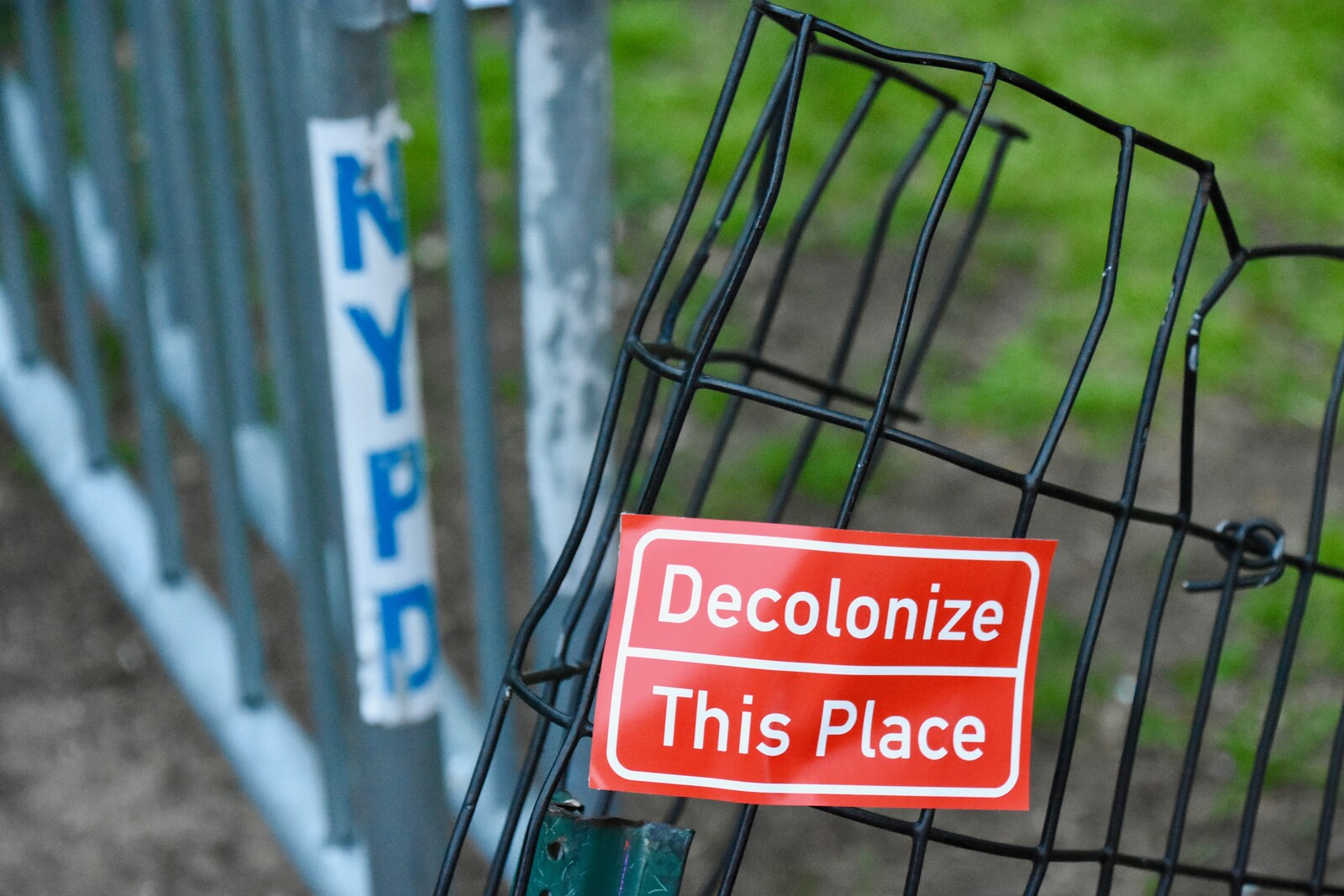Who really thinks museums are politically neutral? Find these people, and you will have found the audience for Laura Raicovich’s new book on the tensions between social movements and museum politics. In 2018, Raicovich resigned as director of the Queens Museum over pushback against her expressions of solidarity with immigrant communities and striking workers, and the board’s decision to rent out the museum for an Israeli government event keynoted by Vice President Mike Pence. In the former case, she writes, the board argued that “a public institution […] should not, and indeed could not, ‘take sides’” in political debates; in the latter, however, it was Raicovich who argued for maintaining the practice of “not renting space for such political events.” Neutrality is rhetorical; the public understands this as well as art world insiders.
So it’s odd how often Raicovich returns to “the myth of neutrality” in Culture Strike. The first three chapters survey the legacy of colonialism, the “universal museum,” and arguments for returning looted objects; the problems of philanthropy in a world of unethical riches; and well-meaning blunders into cultural appropriation. The fourth and sixth ponder ways to move forward by revising the narratives museums tell and committing to an institutional vision not based on an arch modernist posture of universality but imbricated with the needs of the public. The fifth section wrestles with “The Neutrality Problem”—having repeatedly put it down. Raicovich cites Barthes’s idea of “the neutral” as an active, substantial “color” that carries the possibility for flexibility and change, an intriguingly non-neutral neutral. In the end, she argues for taking sides.
The book is especially urgent because the museum-based controversies discussed in Culture Strike are bespoke versions of intractable social conflicts, largely around race, labor, environmentalism, and other forms of inequality. Today, these debates erupt within museums’ orbits and within progressive circles, as opposed to yesterday’s us-vs-them rows around figures such as Robert Mapplethorpe or Richard Serra. Indeed, quoting Chantal Mouffe on agonism, Raicovich offers the museum as a site to stage debate. (To the point, see MoMA’s recent ousting of Strike MoMA protesters from its premises.) Yet she immediately moves to a description of the Art and Society Census, an effort to survey “what people desire from cultural institutions and experiences” launched by the arts and culture division of the Brooklyn Public Library with Raicovich and Hyperallergic, and the more experimental “Look At Art. Get Paid.” program at RISD, which offers people who have not visited a museum 75 dollars to tour selected institutions and give feedback. Such efforts, she writes, are “only a handful of examples of how care can be enacted in cultural space.” This sounds less like agonism than customer relations.
It bears repeating that museums are “conservative” institutions in their bones; from their beginnings in the 1700s, they have first and foremost collected and protected valuable objects, reflecting the ideology of the white elites that built them. Raicovich’s useful history of museums in the United States and their Enlightenment bent charts how the imperative shifted from pure “conservation” to include education. In the present, she proposes, “the single most important and impactful way to make changes is to radically slow down” (emphasis in the original) in order to address society “better and deeper” and with greater care.
It’s not merely polemical to say that Raicovich’s non-neutral, proactive, sensitive cultural institution resembles the “therapeutic institution” that Dave Hickey railed against in the 1990s: “a loose confederation of museums, universities, bureaus, foundations, publications, and endowments” united in the belief that “the ‘experience of art’ […] is good for both our spiritual health and our personal growth.”1 In fact, the most egregious missteps Raicovich discusses, Dana Schutz at the Whitney and Sam Durant at the Walker, went forward not thanks to sloppy belief in neutrality or universality but because these institutions saw themselves as charged with presenting uncomfortable truths—to the point of blindly offending their constituents.
It seems too easy to reimagine cultural spaces as “locations of care, if not communal joy.” Nor is it enough to leverage the will of the people (as Raicovich advocates in the chapter “Moving Forward”) toward social services, unionization drives, and progressive propaganda. To paraphrase Mouffe: for an institution to accommodate real democracy could mean its own obsolescence, yet anything less would amount to rearranging the elites of the status quo. Yes, the museum can test new political models, provoke contests of ideas, act as a refuge, and perform many other social goods. But it will never do these things well if the museum itself remains a given. What if necessary wage equity overwhelms the museum’s rickety finances? What if the museum’s public, duly consulted, says they don’t want the museum at all?
Unjust structures “can be undone,” concludes Raicovich, “collectively, with intention, and with a fearlessness that comes from conviction and commitment, and also from an abundance of love.” Such love is best demonstrated not by the vague democracy of care, but by the principled stand and professional risk Raicovich took when she quit her post in Queens.
Culture Strike: Art and Museums in an Age of Protest by Laura Raicovich is published by Verso on June 15, 2021.
Dave Hickey, The Invisible Dragon: Four Essays on Beauty (Los Angeles: Art Issues Press, 1993), 53.
